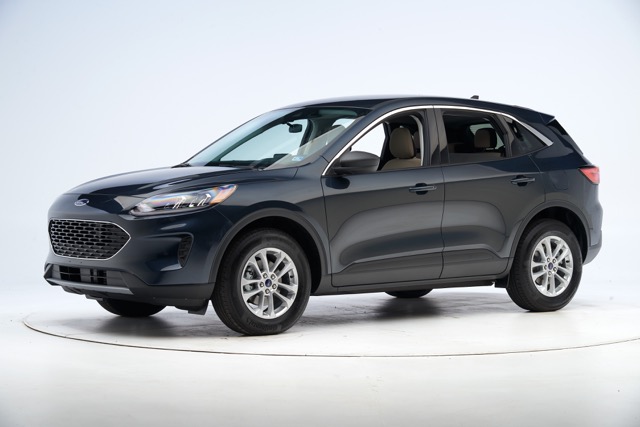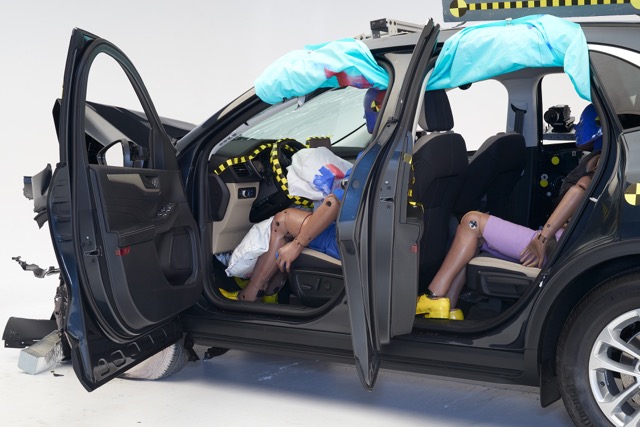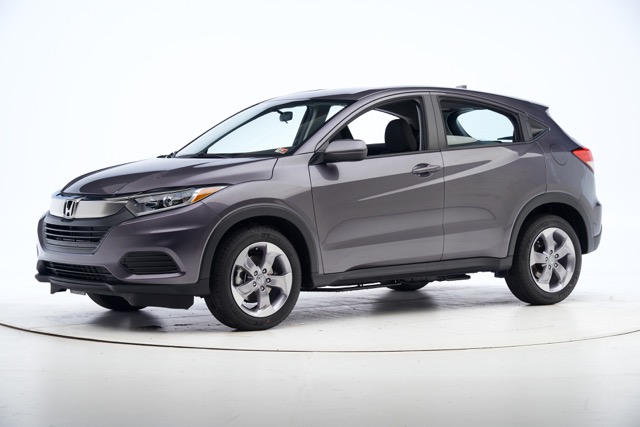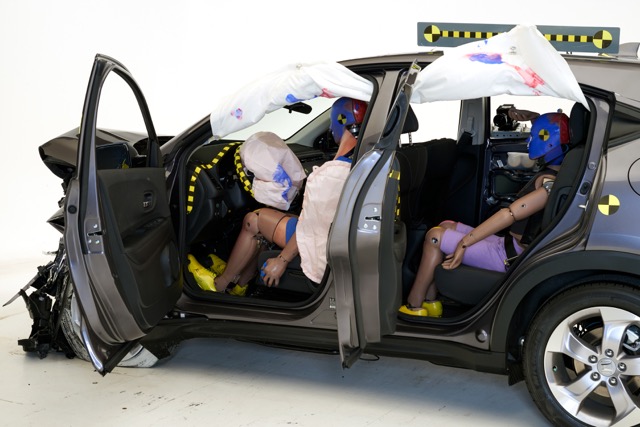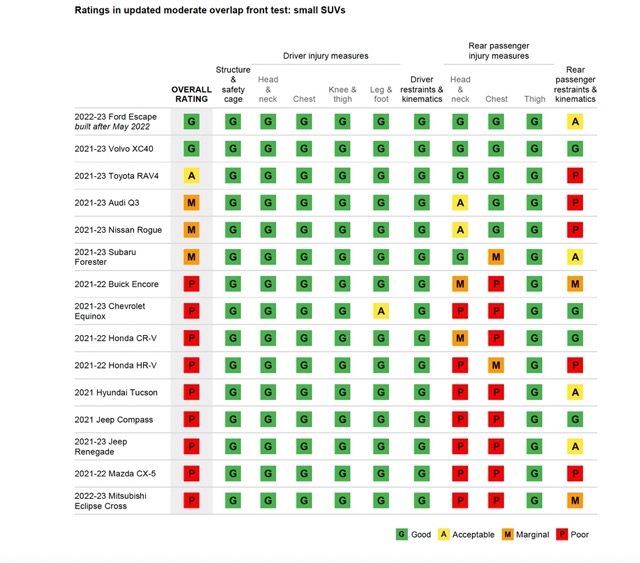A new crash test performed by the Insurance Institute for Highway Safety found that nine out of 15 small crossovers tested earned a “Poor” rating in protecting rear passengers, the insurance-industry funded agency said Tuesday.
The new front moderate overlap test that simulates a head-on collision of two vehicles of similar weight traveling just below 40 mph examined the impact on rear seat passengers. The IIHS added a dummy behind the driver dummy to replicate a small woman or 12-year-old child in the rear seat. The original test launched in 1995, and much has changed on roadways in that time.
In recent years, car cabins have more rigid crumple zones so there is less deformation from a front crash in the passenger cabin. The addition of more airbags and advanced seat belts have further benefited front passengers. Since 2007, the risk of a fatal injury in a crash is 46% higher for belted rear passengers than belted front passengers, according to the IIHS.
Every one of the 15 small crossovers received top “Good” ratings in the original test that examines only the front-seat dummy. Originally, most vehicles tested in 1995 earned “Marginal” or “Poor” ratings for the front dummy.
“Thanks to automakers’ improvements, drivers in most vehicles are nearly 50 percent less likely to be killed in a frontal crash today than they were 25 years ago,” IIHS president David Harkey said in a statement. “Our updated test is a challenge to manufacturers to bring those same benefits to the back seat.”
Ford Escape frontal crash test by the IIHS
Ford Escape frontal crash test by the IIHS
Honda HR-V frontal crash test by the IIHS
Honda HR-V frontal crash test by the IIHS
The IIHS updates its tests more automakers attain “Good” ratings. This year, the IIHS instituted a tougher side-impact test to reflect the faster speeds and heavier, taller vehicles proliferating in modern roadways. Headlight testing is another criterion for earning the coveted Top Safety Pick award.
The front overlap test remains the same, but the additional dummy gets tested for excessive risk of injury to the head, neck, chest, abdomen, or thigh. Chest injuries were a particular focus since they are the most common serious injury in the rear seat for adults. It also tests to see if the body “submarines” beneath the lap belt.
The only vehicles to earn top “Good” ratings were the Ford Escape and Volvo XC40, which showed minimal risk of injury to rear-seat passengers. The Toyota RAV4 earned an “Acceptable” rating due to a shifting lap belt that could increase the risk of abdominal injuries. The Audi Q3, Nissan Rogue, and Subaru Forester earned “Marginal” ratings for increased risks to the head, neck, or chest.
IIHS front overlap test results
“Poor” ratings applied to the Mitsubishi Eclipse Cross, Buick Encore, Chevrolet Equinox, Honda HR-V, Honda CR-V, Hyundai Tucson, Jeep Compass, Jeep Renegade, and Mazda CX-5. The CX-5 and HR-V dummies experienced submarining.
“In all nine poor-rated vehicles, injury measurements indicated high risks of head, neck and chest injuries for the rear passenger, and the seat belt exerted excessive forces on the chest of the second-row dummy,” the IIHS reported.
Source: Read Full Article

